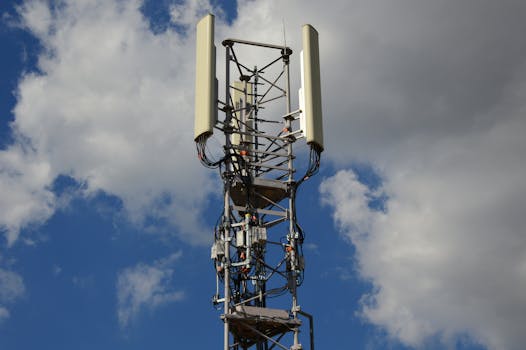5G Technology Advancements and Impact on Mobile Networks

5G Technology Advancements and Impact on Mobile Networks
5G technology advancements are transforming the mobile network landscape, enabling faster data transfer rates, lower latency, and greater connectivity. The fifth generation of wireless technology is poised to revolutionize the way we communicate, work, and interact with each other. In this article, we will delve into the latest developments in 5G technology and its far-reaching impact on mobile networks.
5G technology is built on the foundation of previous generations of wireless technology, but it offers significant improvements in terms of speed, capacity, and reliability. The new radio frequency (RF) and network architecture are designed to support a wide range of applications, from enhanced mobile broadband (eMBB) to ultra-reliable low-latency communications (URLLC) and massive machine-type communications (mMTC). With 5G, mobile networks can now support a vast number of devices, enabling the widespread adoption of the Internet of Things (IoT).
Key Features of 5G Technology
Some of the key features of 5G technology include millimeter wave (mmWave) spectrum, which offers faster data transfer rates and lower latency. The new RF also supports beamforming, massive MIMO, and edge computing, which enable more efficient use of spectrum and improved network performance. Moreover, 5G networks are designed to be more secure and reliable, with built-in encryption and advanced authentication protocols.
The impact of 5G technology on mobile networks is multifaceted. On one hand, it enables faster data transfer rates, which can support a wide range of applications, such as video streaming, online gaming, and virtual reality. On the other hand, 5G technology can also support critical communications, such as public safety and emergency services, which require ultra-reliable and low-latency connectivity.
Impact on Mobile Networks
The deployment of 5G technology is expected to have a significant impact on mobile networks, enabling new use cases and applications that were not possible with previous generations of wireless technology. For instance, 5G can support the widespread adoption of IoT devices, such as smart home appliances, wearables, and autonomous vehicles. Moreover, 5G can also enable new applications, such as remote healthcare, smart cities, and industrial automation.
The impact of 5G technology on mobile networks is not limited to the technical aspects. It also has significant economic and social implications. For instance, the deployment of 5G networks can create new job opportunities, stimulate economic growth, and improve the overall quality of life. Moreover, 5G technology can also support digital inclusion, enabling people in remote and underserved areas to access high-speed internet and other digital services.
Challenges and Limitations
While 5G technology offers significant advantages over previous generations of wireless technology, it also presents several challenges and limitations. For instance, the deployment of 5G networks requires significant investment in infrastructure, including the installation of new base stations, fiber optic cables, and other equipment. Moreover, 5G technology also requires the development of new devices and applications that can take advantage of its capabilities.
Another challenge facing the deployment of 5G technology is the availability of spectrum. The mmWave spectrum used in 5G networks is highly sought after, and its allocation is subject to regulatory approval. Moreover, the use of mmWave spectrum also requires the development of new antennas and other equipment that can support its high-frequency bands.
Conclusion
In conclusion, 5G technology advancements are transforming the mobile network landscape, enabling faster data transfer rates, lower latency, and greater connectivity. While there are challenges and limitations to the deployment of 5G technology, its potential impact on mobile networks and society as a whole is significant. As the deployment of 5G networks continues to gather pace, we can expect to see new applications and use cases emerge that take advantage of its capabilities.



